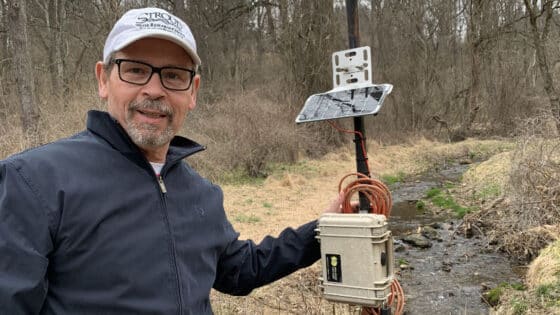Arscott, D.B., K. Tockner, and J.V. Ward. 2000. Archiv für Hydrobiologie 49:679–704.
doi: 10.1127/archiv-hydrobiol/149/2000/679
Abstract
Habitat structure and diversity were investigated at multiple scales along the Tagliamento River (NE Italy) to analyze the spatial and temporal configuration of the aquatic habitat templet in a complex alluvial river corridor in the European Alps. A geomorphic approach was employed to determine floodplain structure and channel configuration using aerial photographs and digitized maps. Structural, thermal, and chemical variables were sampled monthly for one year in 3-km long study sections within six distinct geomorphic reaches along the longitudinal continuum. Aquatic habitat heterogeneity and complexity was quantified along the longitudinal dimension (corridor scale), within geomorphic reaches (floodplain scale) and within floodplain water bodies (within-habitat scale). Four major types of aquatic habitats were distinguished: surface-connected channels (SC), alluvial channels (AC), tributary channels (TC), and isolated standing water bodies (ISO). The first 3 types included primary, secondary, and tertiary branches plus backwaters. Active floodplain width was greatest in the island-braided lower floodplain (reach IV), which also exhibited the highest values for aquatic habitat area per river km, aquatic-terrestrial ecotone length per river km, within-floodplain thermal heterogeneity, and aquatic habitat diversity. Principal component analysis (PCA) clearly distinguished lotic from standing waters along the primary axis and substrate gradients (both longitudinally between floodplains and laterally within floodplains) on the secondary axis. PCA applied to 21 chemical variables illustrated a downstream increase in floodplain-scale spatio-temporal heterogeneity along the river corridor. Total environmental variance is considerably enhanced by the superimposition of longitudinal changes (corridor scale) on lateral changes within geomorphic reaches (floodplain scale). This study clearly demonstrated the high levels of structural complexity and habitat diversity that are possible in Alpine rivers, with implications for the important role of environmental heterogeneity in sustaining functional integrity.


